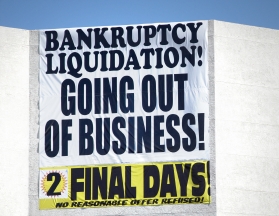 In today’s warp-speed business world, strategic agility – the ability to move fast with flexibility and focus – is no longer a competitive advantage. It’s a business imperative. If your organization can’t adapt on the run without losing sight of winning, your competition will soon be looking at you through their rear-view mirror.
In today’s warp-speed business world, strategic agility – the ability to move fast with flexibility and focus – is no longer a competitive advantage. It’s a business imperative. If your organization can’t adapt on the run without losing sight of winning, your competition will soon be looking at you through their rear-view mirror.
Interestingly, when I talk about this concept in keynote presentations or small groups of business leaders, I always get the same response. People nod their heads in agreement and you can see the light bulbs go on. Afterwards, many of the questions posed to me have to do with how to develop more agile organizations that can respond quickly to changing market conditions and customer needs.
Clearly, today’s business leaders understand the need to develop strategic agility. Which begs the question – why aren’t more organizations doing it?
One reason is that too many companies are focused more on maintaining “what made us successful” than on developing the flexibility required for today’s markets. But that’s only one excuse of many. Here are the top 10 excuses why more business leaders aren’t making strategic agility a high priority.
- We don’t have time to slow down.
On the surface, this seems like a legitimate excuse. Developing strategic agility requires forethought and planning, but we’re all running so fast who has the time to slow down and plan? The problem is, when we don’t pause to plan, we end up spending more time on “do-overs” or catching up to those who do take the time to slow down, pause, and plan ahead.
- Everyone here already knows what to do.
Well, yes and no. Most people know how to do their jobs. But those jobs usually consist of getting the product or service out the door on time, not responding to changing customer needs. Don’t assume that people know how to be strategically agile. You have to teach them – and make it part of their jobs.
- We all know what the goals are.
Really? If I were to walk into your business tomorrow and ask 10 people to identify the organization’s top strategic priorities, they would all answer correctly? I think not. You may have communicated the goals once or twice, but that doesn’t mean they stuck in people’s minds. Communication needs to be an ongoing process so that people never lose sight of the goals.
- That’s what consultants do.
Not quite. Yes, consultants can teach a process for developing strategic agility, but they can’t do it for you. As with any type of planning, it’s all about making it a priority and then following through with implementation.
- It’s just theoretical.
At one time, so were quality, continuous improvement, and just-in-time delivery. These are now required just to get your foot in the door. The evidence is everywhere that today’s market leaders are those who can anticipate the future and quickly respond to the unexpected.
- No one else in our industry does that.
All the more reason to be the first! In fact, that’s how many market leaders become market leaders – by being the first in the industry to develop a new way of doing things. What if your competitors are already working to develop strategic agility but you don’t know it? Where will that leave you when they succeed?
- We’ve been doing it just fine this way for years.
All too often, success breeds complacency and over-confidence. As a result, people focus on maintaining the status quo rather than paying attention to changes occurring beyond the four walls of the business. Corporate graveyards are littered with tombstones engraved with the words “But we’ve always done it this way…”
- Our team is great; we don’t need to learn strategy.
Your team may indeed be great – with your current business model. But what happens when some outside competitor obsoletes it? Or just gets faster, stronger and more agile? Having a great team doesn’t guarantee continued success. Just look how hard it is to repeat as Super Bowl champions.
- We’re successful; we don’t need to change how we do things.
Where have I heard this excuse before? Radio Shack. Kodak. Borders. Sears. The list of former market leaders who got stuck in the past goes on and on.
- It’s too much work.
So is trying to forestall bankruptcy. Yes, developing strategic agility requires a lot of upfront planning and work. But once you have the skills in place, you’ll be amazed at what your organization can accomplish.
So stop making excuses, build strategic agility into your organization, then get out of the way and enjoy winning as an organization!
Call to action: Identify one thing you can do to make your organization more nimble and responsive to shifts in our world.








